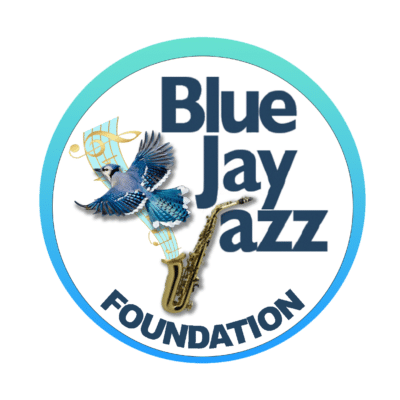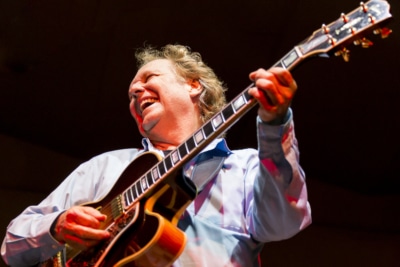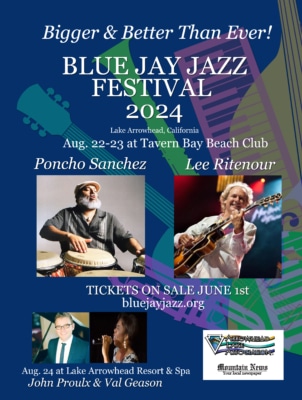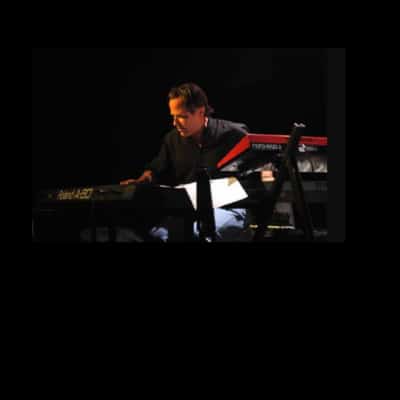Casting his mind still further back, The Lighthouse shares its name with the storied LA jazz club where the teenage guitarist was to be found most nights in the mid-’60s. “I’d started playing guitar at eight, and by 12, I was very serious. Everybody’s number was in the phonebook back then, right? So my dad – who was an amateur piano player and always very supportive – called up Joe Pass and Barney Kessel and asked them to give me a guitar lesson. Barney ended up recommending this incredible teacher, Duke Miller, and that was the foundation of all my playing. The Lighthouse was this very funky jazz club where I met Wes Montgomery. By the age of 16, I’d take the car over there in the late afternoons and just watch the bands soundcheck.”
Whatever genre you were into, recalls Ritenour, the guitar scene at that magical juncture in the mid-’60s was hard to beat. “In every field, there were legends. In jazz, you had Joe Pass, Wes Montgomery, Barney Kessel, Howard Roberts, Jim Hall, Pat Martino. In Blues, B.B. King, Albert King, John Lee Hooker. In Rock, Jimi Hendrix was coming, Clapton and Beck were already there. In Country, you had Chet Atkins, and the all time great classical guitar master, Segovia, and Sabicas, and Paco de Lucia for Flamenco! Great guitar playing was everywhere you turned, and I loved them all…How could you not?
Those eclectic early tastes served Ritenour well. The jazz giants at The Lighthouse were a passion for life: just check out his love-letter to the great Mr Montgomery on 1993’s Wes Bound. But from the day he lucked into his first session for The Mamas And The Papas at age 16, Ritenour had the widescreen musicality to forge a career as one of LA’s busiest session men. “I remember John Phillips had this incredible studio in his Beverly Hills mansion and I just thought, ‘This is what I want’. As for my favorite and memorable sessions, I remember getting called by Bob Ezrin to record on “One Of My Turns” and “Comfortably Numb” on Pink Floyd’s, The Wall…incredible. And then there was Quincy Jones producing George Benson’s, “Give Me the Night” album and all of us waiting ‘til 4am for Stevie Wonder to show up and play a song he’d written for George’s album…Ha! Too many memories!”
Like close friend and fellow session ace, Toto’s Steve Lukather, Ritenour was always more than a gun-for-hire. In ’76, he launched his own solo career with First Course, and managed the magic trick of following his muse while finding enviable commercial success, especially in the ’80s. “On the West Coast, fusion was just starting,” he remembers, “and we were beginning to combine the melodies of pop music, but with the sophistication of jazz. We were listening to people like John McLaughlin, Chick Corea, and then at the same time, Grover Washington Jr, David Sanborn, Bob James. So it was really a natural evolution for my own records to evolve out of that. When I finally did win a Grammy in 1985 – for “Early A.M. Attitude” – I think I was actually stuck on the freeway. But awards aren’t the reason we’re making music.”
Likewise, while the jazz supergroup Fourplay scored a commercial hit with their eponymous 1991 debut album. For Ritenour, the attraction was all about the chemistry between the band members. “The magic was immediate between me, Bob James, Harvey Mason and Nathan East. You can’t draw that sort of thing up on a chart – it either works or it doesn’t. We did three albums, but then the business got so complicated that I took a pass in 1997. But there was always friendship and musical respect, and we are talking about doing one last reunion project together.”
Respect was palpable, too, when Ritenour made the 2010 album, Lee Ritenour’s Six String Theory: an all-star album that drafted many of the famous friends he’d picked up along his path. “In the early days, you could never put country, jazz, rock and all these styles on the same record. The record companies would say, ‘No, you’ve got to have one theme’. But by 2010, the labels weren’t as powerful as they were, and they were looking for interesting projects. I went to my buddy Steve Lukather, and George Benson and B.B. King, and they all said yes. We opened it up to players like Joe Bonamassa and John Scofield – and everyone played their ass off”
LEE RITENOUR & FRIENDS
On stage with Lee will be…George Whitty, keyboard, Wesley Ritenour, drums, and Melvin Davis, bass
GEORGE WHITTY
www.musicgwhitty.com | |Watch video.
Grammy-award winning keyboardist George Whitty has spent 30 years playing on the road with the Brecker Brothers, Herbie Hancock, David Sanborn, Richard Bona, Chaka Khan, Sadao Watanabe, and a dozen others, and his resume as a session musician and producer includes some of the best-selling records of all time: Santana’s “Supernatural” (with Dave Matthews), Celine Dion’s “Falling Into You” and “These are Special Times”, and more than 300 other CDs.
As a producer/keyboardist, his Grammy-winning streak began with Chaka Khan’s “The Woman I Am” in 1992 and extends through 3 award-winning releases with the Brecker Brothers, most recently Randy Brecker’s “34th and Lex”, 2004’s Grammy-winner for Contemporary Jazz Record of the Year.






